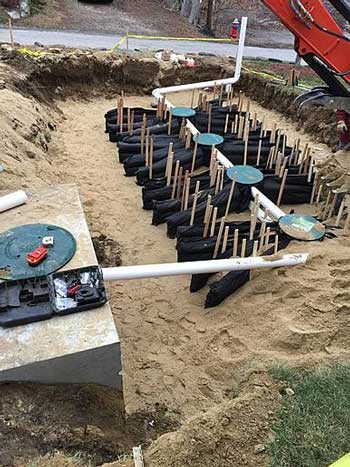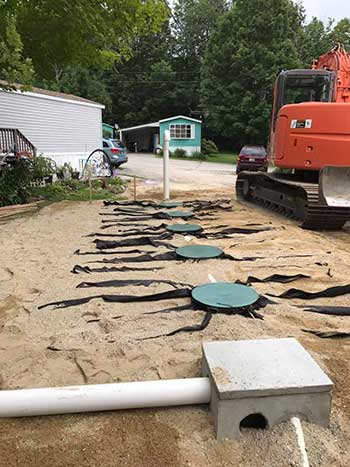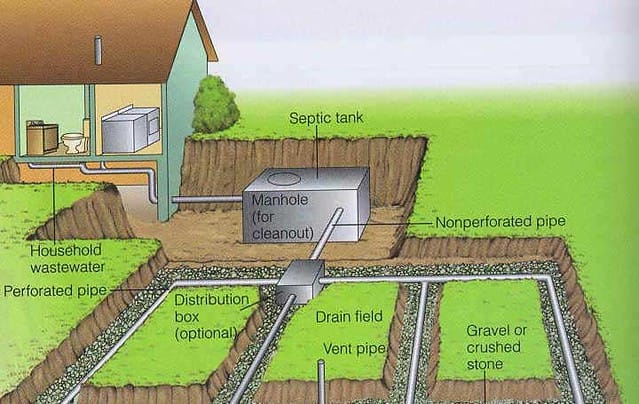Introduction
Septic systems are an essential part of many residential and commercial properties, providing a safe and effective way to manage wastewater. If you’re considering installing or replacing a septic system, you might be wondering about the cost.
Importance of having a septic system
A functioning septic system is crucial for maintaining a hygienic and healthy living environment. It effectively treats and disposes of wastewater, preventing contamination of groundwater and surrounding areas. Additionally, a well-maintained septic system can increase the value of your property.
Factors that affect the cost of a septic system
Several factors can influence the cost of a septic system installation or replacement. These include the size and capacity of the system, the layout and topography of the property, the type of soil, the necessary permits and inspections, and any additional components such as pumps or alternative treatment systems. It’s also essential to consider maintenance costs, as regular pumping, inspections, and repairs may be required.
When considering the cost of a septic system, it’s recommended to consult with a professional installer or contractor who can assess your specific needs and provide an accurate estimate based on local regulations and conditions.
By understanding the importance of a septic system and the factors that affect its cost, you can make an informed decision and ensure the long-term functionality and efficiency of your wastewater management system.

Conventional Septic System
Components and functions of a conventional septic system
A conventional septic system consists of three main components: a septic tank, a drainfield, and the soil beneath it. When wastewater from the building enters the septic tank, solids settle to the bottom while liquids flow into the drainfield. The drainfield then allows the wastewater to disperse into the soil, where it undergoes natural treatment.
Cost breakdown of a conventional septic system
The cost of installing a conventional septic system can vary depending on several factors, such as the size of the tank, the complexity of the drainfield design, and the specific soil conditions on the property. On average, the cost for a conventional septic system installation can range from $3,000 to $7,000 or more.
Here’s a breakdown of the typical costs associated with a conventional septic system:
- Permitting and design fees: These costs cover the necessary permits and design plans, which can range from $500 to $1,500.
- Excavation and installation: This includes the excavation of the area, installation of the septic tank and drainfield, and labor costs, which can range from $2,000 to $5,000.
- Additional costs: Depending on the specific requirements of your property, additional costs may include soil testing, site preparation, and any necessary modifications to meet local building codes. These costs can vary but typically range from $500 to $1,500.
It’s important to note that these are general cost estimates, and actual costs can vary significantly depending on the factors mentioned above. It’s recommended to obtain multiple quotes from reputable septic system installers in your area to get a more accurate cost estimate.

Alternative Septic Systems
Types of alternative septic systems
When it comes to septic systems, the traditional gravity-fed system might not be the only option for you. Alternative septic systems offer innovative solutions for areas where traditional systems are not feasible. Here are a few types of alternative septic systems:
- Aerobic Treatment Units (ATUs): These systems use oxygen to break down waste more efficiently, making them ideal for areas with poor soil conditions.
- Sand Filter Systems: In this system, wastewater is filtered through sand and gravel to remove contaminants before being released into the ground.
- Mound Systems: Mound systems are built above the natural soil surface and use sand, gravel, and soil to treat and filter wastewater.
Cost comparison of alternative septic systems
When considering alternative septic systems, it’s essential to think about the cost implications. While the initial installation cost may be higher than a traditional septic system, alternative systems often require less maintenance and fewer repairs over time.
Here is a rough cost comparison of alternative septic systems:
| System Type | Average Installation Cost | Maintenance Cost |
|---|---|---|
| Aerobic Treatment Units (ATUs) | $5,000 – $20,000 | Low |
| Sand Filter Systems | $6,000 – $15,000 | Moderate |
| Mound Systems | $15,000 – $30,000 | Moderate |
It’s important to note that these are just approximate costs, and the actual expenses may vary depending on various factors such as site conditions, system size, and local regulations. However, conducting thorough research and consulting with septic system professionals can help you determine the best alternative septic system for your needs and budget.

Additional Factors Affecting Cost
Site conditions and soil type
The cost of a septic system can vary depending on the site conditions and soil type. If the terrain is rocky or uneven, it may require extra excavation work, which can add to the overall cost. Similarly, certain soil types, such as clay or high groundwater areas, may require additional measures to ensure proper drainage and prevent contamination.
Permitting and installation costs
In addition to the basic components of a septic system, there are other factors that can affect the overall cost. This includes obtaining the necessary permits and approvals from local authorities, which may have associated fees. Installation costs can also vary depending on the complexity of the system, the distance from the house, and any additional features or upgrades required.
It’s important to note that the cost of a septic system can also vary depending on the region, as labor and materials costs can differ. Therefore, it is recommended to obtain multiple quotes from reputable contractors to get an accurate estimate for your specific needs.
Overall, the cost of a septic system can range from a few thousand dollars to tens of thousands, depending on various factors. It’s important to consider all these factors and consult with professionals to determine the best solution for your property and budget.

Maintenance and Repair Costs
Regular maintenance expenses
Maintaining a septic system is essential to ensure its proper functioning and longevity. Regular pumping is typically recommended every three to five years, and the cost can vary depending on factors such as the size of the tank and the location of the property. On average, homeowners can expect to spend between $300 and $500 for a routine pumping service. Other maintenance expenses may include inspections, filter cleaning, and the use of additives to promote the health of the system.
Common septic system repairs and associated costs
Septic systems may require occasional repairs due to issues like clogged pipes, leaks, or damaged drain fields. The cost of these repairs can vary widely depending on the extent of the problem. Minor repairs, such as fixing a clogged pipe, may range from $200 to $500. However, major repairs, such as replacing a drain field, can cost several thousand dollars. It’s important to address any issues promptly to prevent further damage and avoid more costly repairs down the line. Regular maintenance and proper usage can help reduce the likelihood of extensive repairs and save you money in the long run.
It’s worth noting that the cost of a new septic system installation can vary significantly depending on factors such as soil conditions, site accessibility, and system size. It’s recommended to obtain multiple quotes from reputable contractors to ensure a fair price.

Conclusion
When considering the cost of a septic system, it is important to take into account various factors that can influence the overall price. These factors include the size and complexity of the system, local regulations and permits, soil conditions, and the location of the property.
Average cost range for a septic system
The average cost range for a septic system installation can vary widely depending on these factors. On average, homeowners can expect to spend between $3,000 and $7,000 for a basic septic system. However, more complex systems or installations in challenging soil conditions can cost upwards of $15,000.

Factors to consider before investing in a septic system
Before investing in a septic system, it is crucial to consider a few key factors. Firstly, check the local regulations and obtain any necessary permits. Secondly, assess the soil conditions on your property to determine if it is suitable for a septic system. Additionally, consider the maintenance and ongoing costs associated with septic system ownership.
By taking these factors into consideration, homeowners can make informed decisions about the cost and feasibility of installing a septic system on their property.




